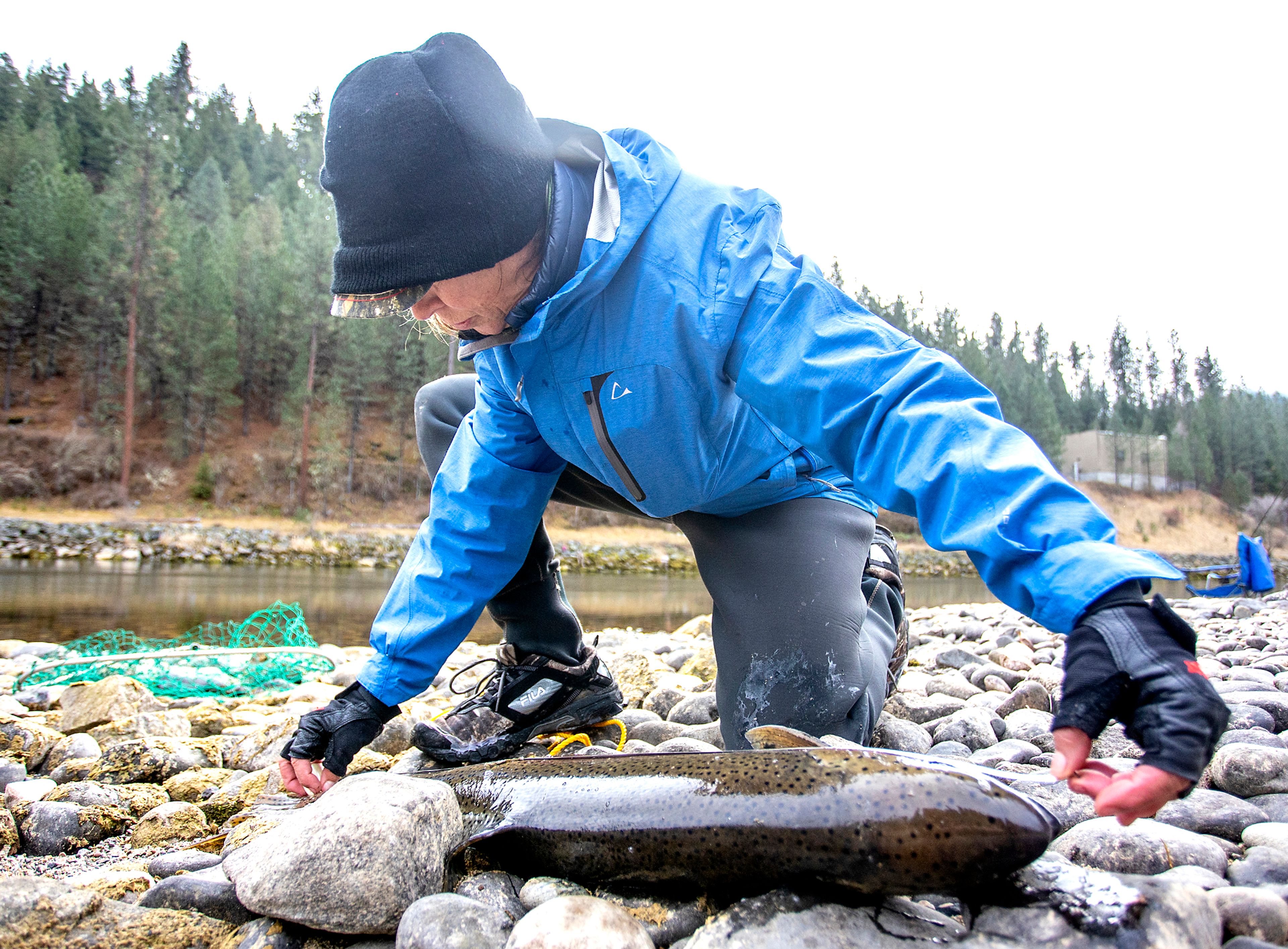PINK STEEL: Study shows pink salmon stunt steelhead growth
Study finds that steelhead are returning from ocean smaller during odd years because of increased competition for food resources
A new study adds evidence to the theory that the super abundance of pink salmon in the north Pacific Ocean is having far-reaching reverberations on other species of anadromous fish, including wild Snake River steelhead.
Pink salmon follow an every-other-year boom and bust cycle with returns as much as 25 times higher during odd years, compared to even years. They have also increased in abundance recently — helped by robust hatchery programs in the U.S., Canada, Russia and Japan. Wild runs are doing well too — likely reaping benefits of slightly warmer ocean and freshwater in the extreme north that is linked to climate change. Conversely, rising temperatures in oceans and rivers farther south is harming species like steelhead, chinook and coho and sockeye salmon.
Pinks versus steelies
A study led by Ryan Vosbigian, a research associate at the University of Idaho’s Fish and Wildlife Sciences Department, part of its College of Natural Resources, found that natural origin steelhead returning to Snake River tributaries were smaller during odd years.
The range of the two species overlap in the central north Pacific Ocean and to some extent in the Gulf of Alaska. During that time they compete for food like gonatid squid. When pink numbers are booming, there is less food to go around.
“What we’re finding is that there is an effect of pink salmon being so abundant that the common resource is a little more sparse, and so steelhead are coming back slightly shorter.”
Vosbigian and colleagues Logan Wendling from the UI Department of Mathematics, Timothy Copeland at the Idaho Department of Fish and Game and Matthew R. Falcy at the U.S. Geological Survey and UI, hypothesized that competition from pink salmon during odd years could be measured in steelhead. They believed fish that returned in odd years after spending two or three years in the ocean would be shorter compared to those that came back in even years. Since steelhead that return after just one year in saltwater tend not to overlap with pink salmon, they didn’t expect to see a size difference.
To find out, they used data collected at the Lower Granite Dam fish trap. Scientists use the trap to sample adult steelhead and salmon during their return from the ocean. Their study, “Cycles in Adult Steelhead Length Suggest Interspecific Competition in the North Pacific Ocean,” was published in the Canadian Journal of Fisheries and Aquatic Sciences and found on average that odd-year returners were 1.5 inches (38 millimeters) shorter than even-year fish. That doesn’t account for their sex, time in the ocean or their stock.
During odd years, one-ocean steelhead were only about a quarter-inch shorter. Two-salt steelhead were on average 16.9 millimeters (0.66 inches) shorter and those that spent three years in the ocean were 17.3 millimeters shorter.
“It’s just such a crazy interaction that happens over the whole scale of the ocean. That’s really neat to be able to detect these interactions that take place over such a massive scale,” Vosbigian said.
While the study didn’t look to see if abundant pink salmon during odd years had an effect on steelhead survival, that is something fish managers have suspected for some time. They have noted a steelhead abundance cycle that appears to follow the same even and odd year cycle but, so far, haven’t been able to definitively say it is caused by pink salmon.
“It’s really showing up and it’s getting more extreme and it’s kind of scary,” Joe DuPont, regional fisheries manager for the Idaho Department of Fish and Game, told the Tribune in 2022. “I think we are going to start looking into more and try to understand it. Understanding and doing something about are two different things.”
Barker may be contacted at ebarker@lmtribune.com or at (208) 848-2273.










